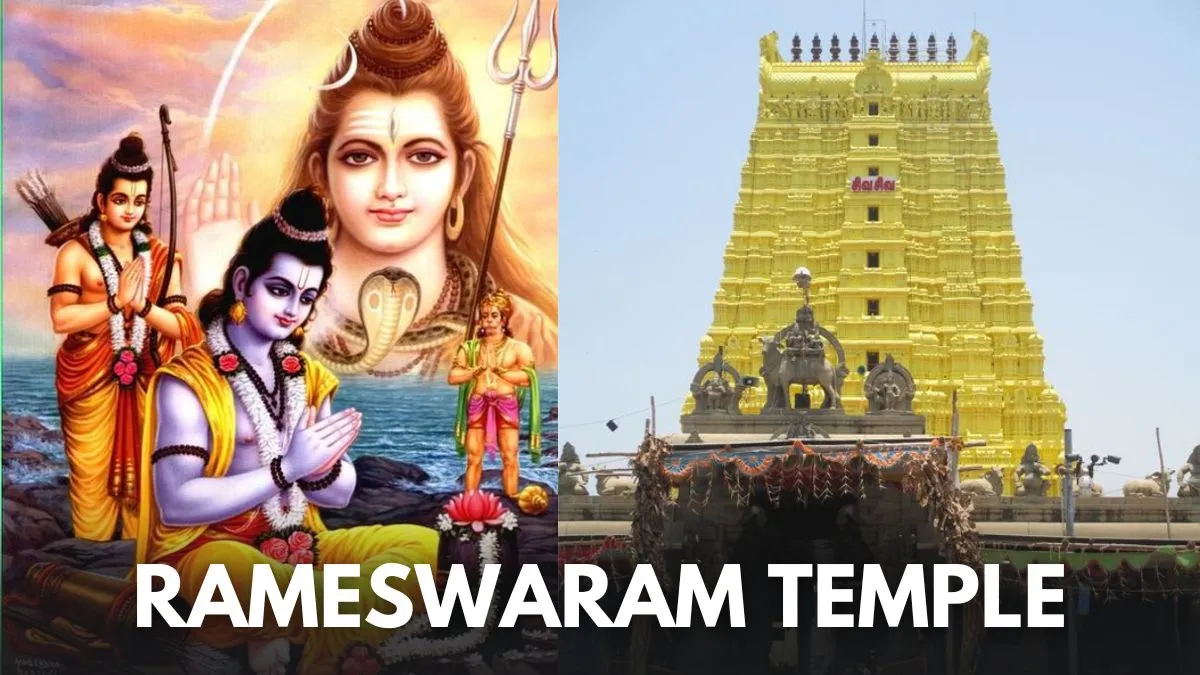- By Kashish Rai
- Sun, 31 Mar 2024 02:42 PM (IST)
- Source:JND
The Rameswaram Temple, located on Pamban Island in the Ramanathapuram region of Tamil Nadu, India, the temple is additionally referred to as the Ramanathaswamy Temple. This significant temple is also one of the 12 Jyotirlingas of Lord Shiva. In addition, the temple, together with Badrinath, Dwarka, and Jagannath Puri, is one of the four holiest places in Hinduism, known as the Char Dhams.
This temple is an ideal representation of the harmony between Shaivism and Vaishnavism since every aspect of it is connected to an episode from the great epic Ramayana. The lingam was installed by Lord Rama, but over the ages, other kings oversaw the building of the temple as a whole. Let us check out some significant details about this temple.
Rameswaram Temple: Interesting Facts About This Temple
- The Ramayana states that Rama, Devi Sita, and his army returned to Rameshwaram following their triumph in Lanka and the annihilation of Ravana. Since Ravana was a Brahmin in addition to being king, Lord Rama committed a sin by killing him. Furthermore, killing a Brahmin is considered the most terrible sin, known as Brahmahathi Dosha, according to Hindu scriptures. Rama begged Lord Shiva to forgive him for his faults as a result.
- Lord Rama chose to install Shivalinga in Rameswaram and carry out the rites to remove the Brahmahati Dosha on Rishi Agastya's advice. Lord Rama thereupon gave Lord Hanuman an instruction to bring the Shivalinga from Mount Kailash. The Shivalingam was supposed to be brought by Hanuman within a certain amount of time, but it took longer than expected. As a result, Mata Sita used the sand from the Ramalingam seashore to craft a little lingam.

The Rameswaram Temple is located on Pamban Island, in the Ramanathapuram district of Tamil Nadu. (Image Source: Canva)
- The old shrine at Rameshwaram is believed to have been expanded in the 12th century by King Parakramabahu of Sri Lanka, according to an inscription found within the temple. Later expansions were added by the Pandays, the Nayak rulers of Madurai, and the kings of Ramanand.
- Sixty-four wells (teerthams) within and surrounding the Ramanathaswamy Temple grounds are another well-known element of the structure. The Skanda Purana lists twenty-four of them as significant. There are twenty-two of them dispersed across the property. Surprisingly, despite their close proximity and shared medicinal qualities, the flavours of the water from each well vary.
ALSO READ: 12 Significant Devi Shakti Peethas Which Are Located Outside India
- Thus, before entering the temple, devotees bathe in teerthams, where it is believed that the sacred waters may aid in salvation and cleanse one of all sins. There are three different kinds of corridors in the Rameshwaram temple, totalling 3850 feet in length.
(Disclaimer: This is based on general public information. Jagran English does not confirm its veracity. Before adopting any measures, consult an expert from the relevant field.)
